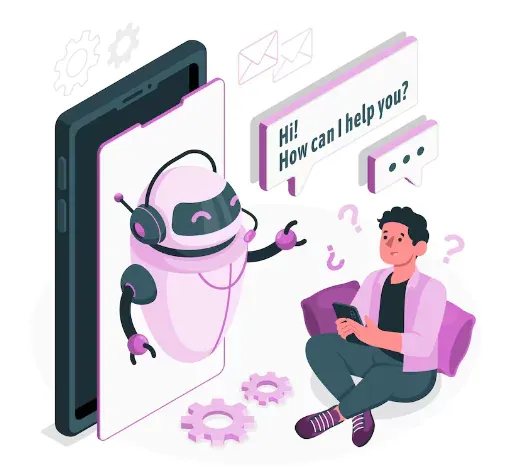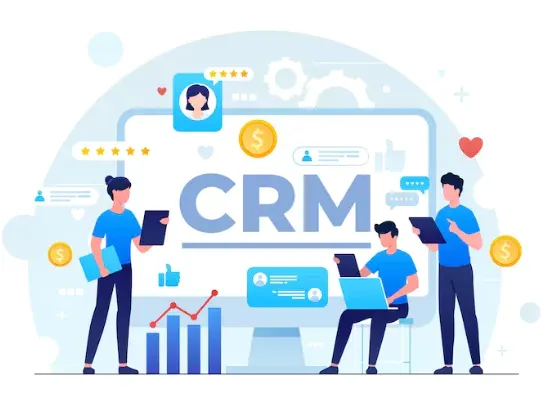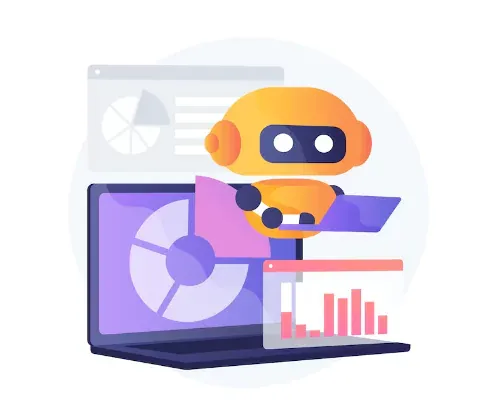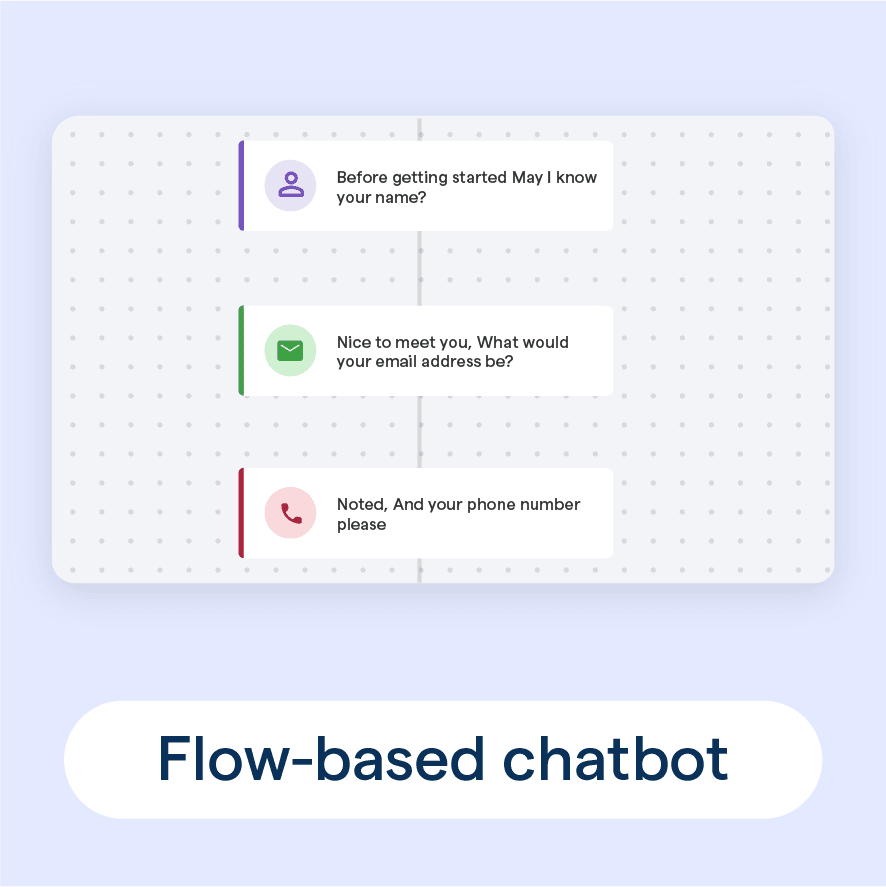What is a Flow-Based Chatbot?
A flow-based chatbot is an automated conversational agent that follows pre-defined conversation paths or flows to interact with users. These chatbots are programmed to respond to specific user inputs with predetermined responses, guiding users through a series of steps to achieve a goal or complete a task.
Flow-based chatbots are designed to provide a structured and efficient user experience by guiding users through a series of predetermined conversation paths. They are particularly useful for handling routine tasks, answering frequently asked questions, and providing a consistent user experience across various platforms.
While flow-based chatbots rely on pre-defined conversation paths, AI-based chatbots use natural language processing (NLP) and machine learning to understand and respond to user inputs more dynamically. AI-based chatbots can handle more complex and varied conversations, while flow-based chatbots excel at providing a controlled and predictable user experience.
How do Flow-Based Chatbots work?
Understanding Chatbot Flows
A chatbot flow is a series of connected conversation steps that guide users through a specific process or interaction. Each step in the flow represents a point in the conversation where the chatbot either provides information, asks a question, or responds to user input.
Designing Conversational Paths
Creating a flow-based chatbot involves designing conversational paths that cover various user scenarios and goals. These paths are built using a combination of triggers, actions, and conditions that dictate how the chatbot will respond to user inputs and guide the conversation.
Managing User Input and Responses
Flow-based chatbots use pre-defined rules to manage user input and generate appropriate responses. These rules can include simple keyword matching, pattern recognition, or more complex decision trees that take into account user inputs, context, and other variables.
Components of a Flow-Based Chatbot
Triggers and Actions
Triggers are events or conditions that initiate a specific action or response from the chatbot. For example, a trigger could be a user input containing a specific keyword or phrase. Actions are the responses or tasks performed by the chatbot in response to a trigger, such as sending a message, asking a question, or updating a variable.
Nodes and Connections
Nodes represent individual steps or points in the conversation flow, while connections define the relationships between nodes. Together, nodes and connections create the structure of the chatbot's conversation paths, determining how the chatbot will guide users through the interaction.
Variables and Conditions
Variables are used to store and manage information within the chatbot, such as user inputs, preferences, or context. Conditions are rules or criteria that determine how the chatbot will respond to user inputs or proceed through the conversation flow based on the values of specific variables.
Benefits of Flow-Based Chatbots
Easy to Create and Maintain
Flow-based chatbots are relatively simple to create and maintain, as they rely on pre-defined conversation paths and rules. This makes them a great option for businesses with limited resources or those looking to quickly deploy a chatbot solution.
Better Control Over Conversations
Since flow-based chatbots follow predetermined conversation paths, businesses have greater control over the user experience and can ensure that the chatbot provides consistent and accurate information.
Cost-Effectiveness
Flow-based chatbots are generally more cost-effective than AI-based chatbots, as they require less advanced technology and expertise to develop and maintain.
Use Cases for Flow-Based Chatbots
Customer Support

Flow-based chatbots can efficiently handle common customer support queries, such as providing information about products or services, troubleshooting issues, or guiding users through processes like account setup or password reset.
Sales and Marketing
Chatbots can be used to engage potential customers, answer questions about products or services, and guide users through the purchasing process, providing a personalized and interactive shopping experience.
Internal Communications
Flow-based chatbots can also be used within organizations to streamline internal communications, such as answering employee questions about company policies, providing IT support, or managing event registrations.
Platforms and Tools for Building Flow-Based Chatbots
BotPenguin
BotPenguin is a chatbot creator designed for websites, WhatsApp, Facebook, and Telegram. With its no-code chatbot maker, it offers a user-friendly platform for businesses to create personalized chatbots that turn visitors into customers and drive revenue. BotPenguin integrates with ChatGPT and comes with a live chat plugin to enhance customer engagement. By leveraging its features, businesses can segment customers based on demographics and purchasing habits, keeping them engaged with tailored offers, discounts, and product updates.
Chatfuel
Chatfuel is a popular platform for creating flow-based chatbots for Facebook Messenger. It offers a user-friendly interface and a wide range of features, including pre-built templates, integrations with third-party services, and analytics tools.
ManyChat
ManyChat is another platform for building chatbots on Facebook Messenger, offering a visual builder with drag-and-drop functionality, making it easy to design and manage chatbot flows. ManyChat also supports integrations with various third-party services and provides analytics tools to monitor chatbot performance.
Tars
Tars is a chatbot platform that allows users to create flow-based chatbots for web and mobile platforms. It offers a visual chatbot builder, customizable templates, and a variety of integrations with third-party tools and services.
Designing a Flow-Based Chatbot
Identifying User Needs and Goals
The first step in designing a flow-based chatbot is to identify the needs and goals of your target users. This involves understanding the types of questions or tasks your chatbot will need to handle and the desired outcomes for each interaction.
Mapping Out Conversational Flows
Once you have a clear understanding of your users' needs, you can begin mapping out the conversational flows that will guide users through the various scenarios and interactions. This involves creating a series of nodes and connections that represent the different steps in each conversation path.
Testing and Iterating
After designing your chatbot flows, it's essential to test and iterate on your design to ensure that it provides a smooth and efficient user experience. This may involve adjusting conversation paths, refining triggers and actions, or improving the chatbot's ability to handle unexpected inputs.
Suggested Reading:
Chatbot Archive
Best Practices for Flow-Based Chatbot Design
Keeping Conversations Simple and Clear
When designing your chatbot's conversation paths, it's important to keep the interactions simple and clear. Avoid using overly complex language or jargon, and focus on providing concise and relevant information.
Providing User Guidance
Ensure that your chatbot provides clear guidance to users throughout the conversation. This can include using prompts or suggestions to help users understand what input is expected or offering options for users to choose from when responding to questions.
Handling Errors and Unexpected Inputs
Design your chatbot to handle errors and unexpected inputs gracefully. This may involve providing helpful error messages, redirecting users to relevant conversation paths, or offering assistance from a human agent if needed.
Integrating Flow-Based Chatbots with Third-Party Services
CRM Integration

Integrating your chatbot with your customer relationship management (CRM) system can help streamline processes, such as capturing leads, updating customer information, or managing support tickets.
Payment Processing
By integrating your chatbot with a payment processing service, you can enable users to make secure transactions directly within the chat conversation, providing a seamless shopping experience.
Analytics and Reporting

Integrating your chatbot with analytics and reporting tools can help you monitor chatbot performance, track user engagement, and identify areas for improvement.
Measuring the Success of a Flow-Based Chatbot
Key Performance Indicators (KPIs)
Establishing KPIs for your chatbot can help you measure its success and identify areas for improvement. Common KPIs for chatbots include user satisfaction, engagement, response time, and conversion rate.
User Feedback and Satisfaction
Collecting user feedback and measuring user satisfaction can provide valuable insights into how well your chatbot is meeting user needs and expectations.
Continuous Improvement and Optimization
Regularly reviewing your chatbot's performance and user feedback can help you identify areas for improvement and optimize your chatbot's design and functionality over time.
Frequently Asked Questions
What is a flow-based chatbot?
A flow-based chatbot is a type of chatbot that follows a predefined conversation flow. It guides users through a series of predetermined paths or options to provide relevant information or assistance.
How does a flow-based chatbot work?
A flow-based chatbot uses decision trees or rule-based logic to present users with choices and guide the conversation. It responds to user inputs based on the predefined flow, offering relevant options or information at each step.
What are the benefits of a flow-based chatbot for businesses?
Flow-based chatbots offer businesses several advantages, including streamlined interactions with customers, consistent messaging, reduced human agent workload, and the ability to handle repetitive tasks efficiently.
Can a flow-based chatbot handle complex queries or requests?
Flow-based chatbots are suitable for handling relatively simple and structured interactions. However, they may struggle with complex queries or requests that require a deeper understanding of context or natural language processing.
How can a flow-based chatbot be customized for specific business needs?
A flow-based chatbot can be customized by designing and mapping out the conversation flow based on the specific requirements of the business. It can be tailored to address frequently asked questions or provide specific information based on the business domain.


